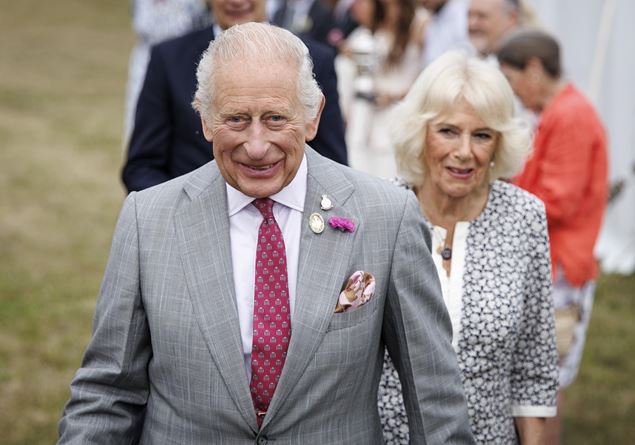A profoundly Christian, ecumenical, religious and spiritual king who leads a state Church still at the heart of British national life, a bulwark against an increasingly widespread atheism, in a country, the United Kingdom, among the most secularized in the world. Arriving in Rome to pray with Pope Leo in the Sistine Chapel, King Charles concludes a long personal journey and changes the history of the monarchy forever. Almost half a century has passed since, then thirty years old, in search of direction for his life, the heir to the throne relied on the perennialism of the controversial guru Laurens van der Posta school of thought that sees the world before modernity as better integrated and more tolerant. In this vision, the different passions of the prince were harmonized: the defense of the environment, the rejection of consumerism and contemporary architecture, the nostalgia for a world more in harmony with nature, his faith in a spiritual basis that informs all of Creation. Now forty years old, in 1994, with a phrase that sparked great controversy, the prince declared that he wanted to be “defender of the concept of faith” rather than “defender of the Christian faith”, a title that belongs to the English sovereign, given by Pope Leo Charles then explained that he had been misunderstood and that he had no intention of changing his role as Supreme Governor of the Church of England once on the throne. He was still looking for his own religious path that would allow him to be himself and place himself, at the same time, in the heart of the state and the Church that supports him. They were also signs of a profound openness towards other religions and of a desire to find a dialogue with those who were not believers. Over the years, the prince has inserted himself into the Christian life of the nation and has become a champion of the rights of the faithful to the Gospel who are persecuted around the world, as he has testified with his collaboration with the “Aid to the Church in Need” association and many public speeches.
Queen Elizabeth, who was the first in the history of the monarchy to invite the then English Primate Cormac Murphy-O’Connor to preach at Sandringham and had great sympathy for the Catholic Church, remained, throughout her life, deeply Anglican, attached to Protestantism, with a very biblical faith. The king, over the years, has demonstrated a more decisive and convinced commitment to ecumenical work than that of his mother. When, in 1982, for the first time since the Reformation of Henry VIII, a Pope, Saint John Paul II, arrived in the English Isles. The then Prince Charles decided to attend the ecumenical service in Canterbury Cathedral, along with the then Archbishop of Canterbury Robert Runcie and the Holy Father, angering some Church of Scotland Protestants. Three years later, accompanied by his wife Diana, the heir to the throne, visiting the Vatican, wanted to go not only to an audience with the Pope, but also to a Catholic Mass in the Holy Father’s private chapel. Two weeks before his departure, however, Queen Elizabeth, worried about the reactions that that radical and unconventional choice – the first time of an English sovereign at a Catholic Mass since the time of Henry VIII – would provoke in the Protestant world, intervened to stop her son’s initiative and decided that the audience with the Pope was more than sufficient. Those were different times.
Today the head of a church born in rupture with Rome prays next to the Pope and the liturgy, precisely at the request of King Charles, will celebrate the tenth anniversary of the Laudato Si’ of Pope Francis whom the king met twice, in 2017 and 2019, and with whom he shared a passion for the environment. Even at home the sovereign has decided to give a new profile to the English Catholic Church, born in 1850, when Catholics, almost always Irish immigrants, recovered their civil rights. One gesture among many was his decision to visit the Birmingham oratory, founded by Saint John Henry Newman when the English saint was declared Doctor of the Church on 31 July. For Carlo, very devoted to Newman, it was a kind of pilgrimage during which he admired, among other souvenirs, the saint’s rosary. Of the new doctor of the Church, as he wrote in an article published inRoman Observer in 2019, King Charles himself admires the profound religiosity and the great capacity for dialogue. And what better proof could there be of the profound ecumenism that animates the sovereign than the decision to invite, here too for the first time since Henry VIII’s break with Rome, the Catholic Primate Vincent Nichols to his coronation on 6 May 2023. And also to be blessed by the English cardinal when, only seventy years earlier, the faithful in Rome were forbidden to enter Anglican churches. The coronation procession, from Buckingham Palace to Westminster Abbey, was also led by the Welsh Cross into which the king wanted to set two fragments of the True Cross, which is believed to have been used in the crucifixion of Jesus, donated by Pope Francis to the sovereign especially for the occasion. King Charles traveling to the Sistine Chapel gives life to the words used by himself, in that article published in Roman Observerto commemorate Newman on the occasion of his canonization: “All our divisions can lead to a deeper understanding and all our liturgies can find a common home”.


